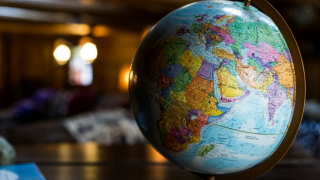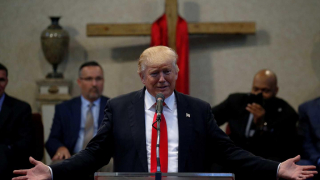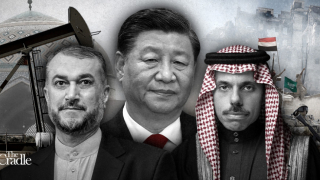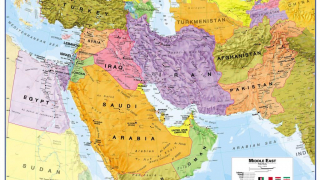B3W vs China, why India is so jumpy
Before discussing the B3W (Build Back Better for the World) initiative, it may be prudent to analyse its evolutionary process. B3W is actually the new form of two previous initiatives led by American Government, the United States Innovation and Competition Act (USICA) and the Blue Dot initiative. USICA is a $200 billion plan aimed at countering China’s influence domestically and abroad. As reported by American media, USICA has gained bipartisan support and has been labelled as “must-pass” legislation, but the negotiation process has resulted in the inclusion of amendments and provisions that deviate from the bill’s original goal.
Main Provisions of USICA, as enunciated by American Action Forum are reproduced here:
The bill proposes an expanded role for the federal government in “strategic sectors” – including semiconductors, drones, wireless broadband, and artificial intelligence – with increased funding, supervision, and regulation of various industries. It also further expands the use of trade provisions in order to restrict the flow of Chinese goods and services and to bolster President Biden’s Buy American agenda.
This legislation was first introduced last year by Senators Chuck Schumer (D-NY) and Todd Young (R-IN) as the Endless Frontier Act (EFA). EFA was dramatically expanded in the past weeks to include several additional provisions. EFA is now a division within the expanded package renamed as the USICA.
Proponents of the bill have asserted that its primary goal is to counter China’s political and economic influence both domestically and abroad. To this end, it pours billions of taxpayer funds into U.S. technology to counter China’s growing economic and political influence. The bill has support from both sides of the aisle and is likely one of the few bipartisan legislative packages that will come out of Congress this year.
Following are the discerned strategic thrust lines:-
It directs the U.S. government to implement a strategy to increase public investment, lending, and trade abroad, focusing mainly on Latin America, the Caribbean, Taiwan, Africa and Southeast Asia.
It establishes intellectual property protections from foreign nations, exclusion from funding programs, and diminishing purchases of goods and services from the specified nations.
It highlights the importance of regaining leadership positions in international standard-setting boards in order to make sure international trade standards benefit the United States.
Aims to counter the influence China has gained through its increased investment in regions such as Africa, Southeast Asia, and Latin America, which apparently has allowed it to foster better trade relations and favourable terms for its enterprises.
Will facilitate research and development in the “key-technology focus areas” including robotics, artificial intelligence, and advanced energy sources. These provisions expand the federal government’s role in incentivizing higher education institutions to do more on those fronts.
Now we come to morphing of Blue Dot Initiative into B3W. Asia Times has summarised the main thrust lines of the Blue Dot initiative as following:
Amid an escalating new Cold War, the Biden administration has tried to mobilize allies and partners to slow China’s technological strides and arrest its rising global influence.US has doubled down on reviving the Blue Dot Network, a long-dormant initiative launched by the previous Trump administration to counter Beijing’s Belt and Road Initiative (BRI), it has now morphed into B3W.
As highlighted by the White House website, Build Back Better World is an Affirmative Initiative for meeting the tremendous infrastructure needs of low and middle income countries. President Biden and G7 partners agreed to launch the bold new global infrastructure initiative B3W a values-driven, high-standard, and transparent infrastructure partnership led by major democracies to help narrow the $40+ trillion infrastructure need in the developing world, which has been exacerbated by the COVID-19 pandemic.
Through B3W, the G7 and other like-minded partners with coordinate in mobilizing private-sector capital in four areas of focus—climate, health and health security, digital technology, and gender equity and equality—with catalytic investments from our respective development finance institutions.
How has China responded? Chinese media, led by Global Times, came hard on American USICA and B3W in initiatives and blasted the neo colonist policies of the Western Block. China has labelled it as a fabrication of the so-called "China threat" to preserve the US' global hegemony and seeks to deprive China of its legitimate development rights through technological and economic "decoupling."
China harshly criticized the US Senate's passing of innovation and competition bill, saying that the legislation is full of Cold War mentality, grossly interferes in China's internal affairs and is doomed to fail, urging Washington to halt the legislation to avoid further damaging China-US relations and cooperation.
Resolute countermeasures from China are expected including trade war and legislative amendments. NPC's Standing Committee is moving ahead with an anti-foreign sanctions draft law this week, which aims to counter unilateral and discriminatory sanctions imposed by foreign governments on Chinese entities and individuals. Chinese media stated that the US bill will not change the increasingly confrontational China-US ties and will only reinforce China's head-on pursuit of technological independence, analysts noted.
Why India is so much Jumpy about B3W; Indian media went overboard to project the B3W initiative as if it’s going to bring in a new era of prosperity for 900 million Indians surviving on food stamp issued by Modi government. Major Indian electronic, print and digital media outlets and opinion makers have projected B3W as the showering of Lakshmi on hapless Indian population. Same euphoria was displayed when India joined Quad, however nothing concrete has come up. India lost 1450 sq kms in Ladakh to People’s Liberation Army, but Quad never came to her rescue, resulting in total embarrassment of the 3rd largest Army in the world.
It may also be interesting to have a look at the economic state of G7 members. Since the seven countries first got together in the 1970s, their share of global GDP has halved, 40% from 80%. Can B3W take on China’s BRI.
Unlike the new world order crafted after World War II, Western countries may have lost the appetite to jump into another Cold War. Italy joined the BRI in 2019 and could find her hands tight.
The G7 are some of the most indebted countries in the world. Today US Public Debt stands at 28 Trillion dollars, rest of the G7 debt in US dollars includes; UK 3 trillion, France 3.2 trillion, Canada 2.3 trillion, Italy 3.3 trillion, Japan 1.3 trillion and even Germany is almost 3 trillion . How can these paper tigers confront the Belt and Roads backed by a surplus Chinese economy?
China has already engaged more than 100 countries in BRI and BRI is seven years old; G 7 is selling a Red Herring which exists on paper only. Let’s see if B3W becomes a practical reality or not.














